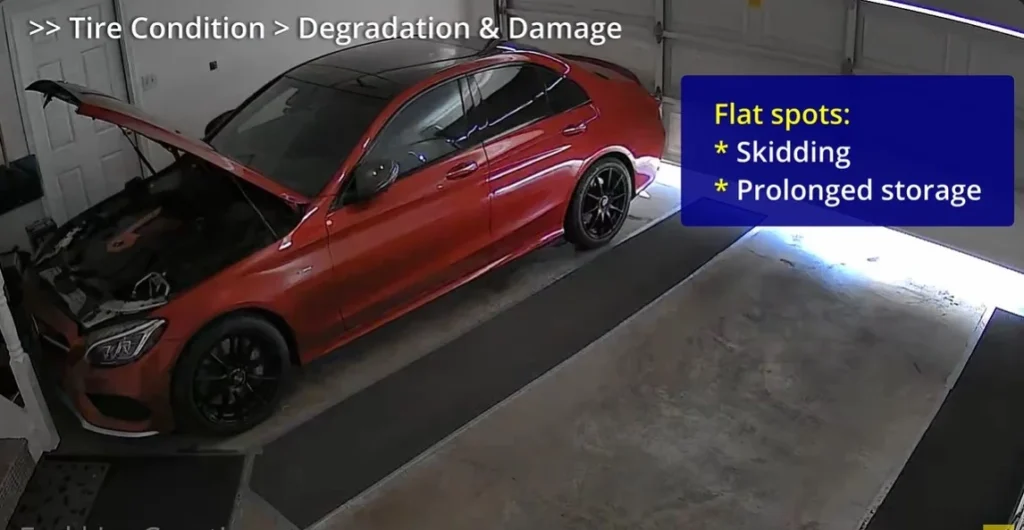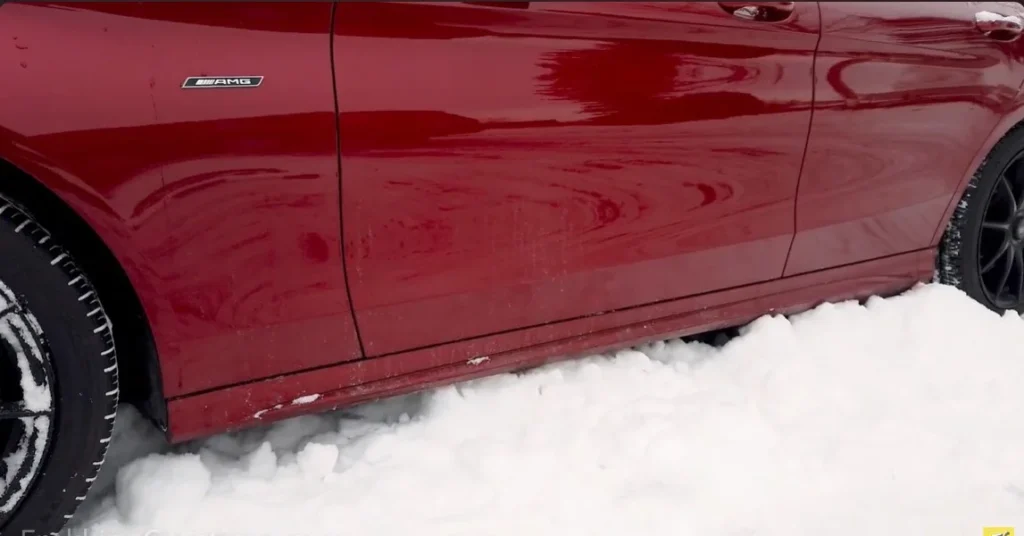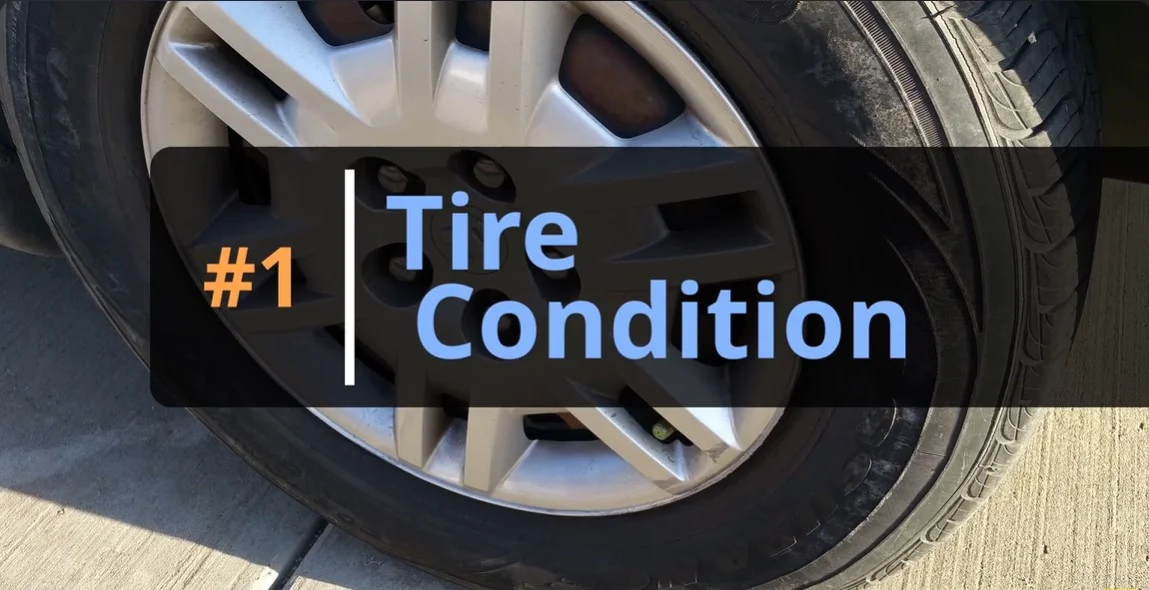Worn treads and visible cracks indicate your tires need replacement before winter. Poor traction and frequent air loss are also signs.
Preparing your vehicle for winter is crucial to ensure safety on icy and snowy roads. Tires play a vital role in maintaining control and stability. Over time, tires wear out and lose their effectiveness, especially in harsh conditions. Recognizing the signs of tire wear can prevent accidents and improve your driving experience.
Regularly inspecting your tires for wear and damage helps you determine when it’s time for new ones. Investing in quality winter tires enhances your vehicle’s performance and safety. Don’t wait until it’s too late; replace your tires before winter sets in to stay safe on the roads.
Importance Of Winter Tires
Winter tires are essential for safe driving during the cold months. They provide better grip and control on icy and snowy roads. Ordinary tires harden in cold temperatures, reducing their effectiveness. Winter tires stay flexible, giving you better traction and safety.
Safety Benefits
Winter tires offer several safety benefits:
- Better Braking: Winter tires reduce stopping distances on icy roads.
- Improved Handling: They help you steer more easily on snow.
- Enhanced Stability: They prevent skidding and sliding, keeping you safe.
Improved Traction
Winter tires are designed for better traction:
| Feature | Benefit |
|---|---|
| Softer Rubber | Stays flexible in cold, providing better grip. |
| Deeper Treads | More grip on snow and ice. |
| Unique Tread Patterns | Channels water and slush away from the tire. |
Winter tires have deeper treads and softer rubber. This ensures better performance in cold weather. These features make them essential for winter driving.

Tread Depth Check
As winter approaches, ensuring your tires are ready is crucial. One of the key factors to check is the tread depth. Proper tread depth ensures your vehicle maintains good traction, especially on slippery roads. Below, we will delve into two effective methods to check your tread depth: the Penny Test and a professional Inspection.
Penny Test
The Penny Test is a quick and easy way to check tire tread depth. Follow these simple steps:
- Take a penny and hold it between your thumb and forefinger.
- Place the penny into the tire tread groove with Lincoln’s head facing down.
- Observe if the top of Lincoln’s head is visible.
If you can see the top of Lincoln’s head, your tread depth is below 2/32 inches. This means it’s time to replace the tires. This test is a simple way to ensure your tires are safe for winter.
Professional Inspection
For an accurate assessment, a professional inspection is recommended. A mechanic will use precise tools to measure tread depth. They will also inspect for other tire issues such as:
- Uneven wear
- Cracks or bulges
- Proper inflation
A professional can provide a detailed report and advice. This ensures your tires are in optimal condition for winter driving.
| Inspection Point | Description |
|---|---|
| Uneven wear | Check for inconsistent tread wear across the tire. |
| Cracks or bulges | Inspect for visible damage on the tire surface. |
| Proper inflation | Ensure tires are inflated to the recommended PSI. |
Using both the Penny Test and a professional inspection can give you peace of mind. This ensures your tires are ready for the challenges of winter driving.
Visible Cracks And Bulges
Winter driving needs reliable tires. Visible cracks and bulges are major signs of tire damage. These can lead to dangerous situations on icy roads.
Sidewall Inspection
Inspect your tire sidewalls carefully. Cracks on the sidewalls indicate rubber deterioration. This weakens the tire structure. Look for bulges as well. Bulges mean the tire has internal damage.
Impact Of Cracks
Cracks can cause tire blowouts. This is risky, especially in winter. Bulges suggest a potential tire burst. Ensure your tires are safe before winter arrives.
| Problem | Effect |
|---|---|
| Visible Cracks | Weakened tire structure |
| Bulges | Potential tire burst |
- Check your tires regularly.
- Replace damaged tires before winter.
- Ensure your safety on icy roads.

Uneven Wear Patterns
As winter approaches, it’s crucial to inspect your tires. Uneven wear patterns can signal that your tires need replacement. This issue can affect your vehicle’s safety and performance, especially on icy roads.
Causes Of Uneven Wear
Several factors can cause uneven wear on tires. Understanding these can help you take preventive measures.
- Improper Wheel Alignment: Misaligned wheels can cause tires to wear out faster on one side.
- Underinflation or Overinflation: Incorrect tire pressure can lead to uneven tread wear.
- Worn Suspension Parts: Damaged suspension components can cause uneven contact with the road.
- Poor Driving Habits: Frequent hard braking and sharp turns can also contribute to uneven wear.
Tire Rotation
Regular tire rotation is essential for even wear. By rotating your tires, you distribute wear more evenly.
- Front to Back: Move the front tires to the back and vice versa.
- Cross Rotation: Swap the left front tire with the right rear tire and the right front tire with the left rear tire.
- Four-Wheel Drive Rotation: Rotate all four tires in a specific pattern recommended by the manufacturer.
Rotating your tires every 5,000 to 8,000 miles can extend their lifespan. It’s a simple task that can save you money and enhance your vehicle’s safety.
Age Of Your Tires
Winter is fast approaching, and ensuring your tires are in top condition is crucial for safe driving. One important factor to consider is the age of your tires. Over time, tires lose their effectiveness, which can lead to dangerous situations on icy roads. Let’s explore how to determine the age of your tires and why it matters.
Manufacture Date
The manufacture date of your tires is a key indicator of their age. You can find this date on the tire’s sidewall. Look for the DOT code, which is a series of numbers and letters. The last four digits represent the week and year the tire was made. For example, a code ending in “1219” means the tire was made in the 12th week of 2019.
| DOT Code | Manufacture Date |
|---|---|
| DOT XYZ 1219 | 12th week of 2019 |
| DOT ABC 0518 | 5th week of 2018 |
Lifespan Considerations
Most tires have a lifespan of around six years. Even if the tread looks fine, the rubber can degrade. This makes the tires unsafe. Consider replacing tires older than six years, regardless of their appearance.
Here are some lifespan considerations to keep in mind:
- Check the DOT code regularly.
- Replace tires that are over six years old.
- Consider your driving conditions and habits.
By understanding the age of your tires, you can make informed decisions. This ensures safety during the harsh winter months.

Performance Issues
Driving safely in winter depends on your tire’s performance. Worn tires can lead to many performance issues. These issues can make driving risky during winter. Let’s discuss two main problems: Handling Problems and Braking Distance.
Handling Problems
Worn tires can cause handling problems. You might notice your car swerving. This happens more on wet or icy roads. Good tires grip the road. Worn tires lose this grip, making driving harder.
Check for these signs:
- A car pulls to one side
- Steering feels heavy or loose
- Vibrations in the steering wheel
Braking Distance
Worn tires increase your car’s braking distance. This means it takes longer to stop. Longer stopping times are dangerous, especially on icy roads.
Consider these points:
- Tires with less than 2/32 inch tread depth
- Visible cracks or bulges
- Frequent skidding or sliding
Replace your tires if you notice these signs. Good tires ensure safety during winter driving.
Air Pressure Stability
As winter approaches, ensuring your tires are in top condition is crucial. Air pressure stability is an essential factor in tire health. Unstable air pressure can indicate that your tires need replacement before winter hits. Let’s explore the key signs of unstable air pressure in your tires.
Frequent Air Loss
If your tires frequently lose air, it could signal a problem. Tires should maintain pressure for weeks. Frequent air loss might mean your tires are worn out. Check your tire pressure weekly. Use a reliable gauge for accurate readings.
Tpms Alerts
Modern cars have a Tire Pressure Monitoring System (TPMS). This system alerts you if tire pressure drops. If your TPMS alert lights up often, inspect your tires. Frequent alerts mean your tires might be leaking. It could be due to damage or wear.
Table: Common Signs Of Tire Issues
| Sign | Possible Cause |
|---|---|
| Frequent Air Loss | Worn or damaged tires |
| TPMS Alerts | Leaks or pressure drops |
Ensuring your tires have stable air pressure is vital. It ensures safety and performance during winter. Keep an eye on frequent air loss and TPMS alerts. Replace your tires if these signs persist. Stay safe on the road this winter!

Winter Preparation Tips
Winter can be harsh on your car. Ensuring your tires are in top shape is crucial. It keeps you safe and avoids unnecessary trouble. Here are some essential winter preparation tips for your tires.
Selecting The Right Tires
Selecting the right tires for winter is vital. Winter tires are made for cold conditions. They have a special rubber compound. This compound stays flexible in freezing temperatures. Regular tires get hard and lose grip.
Winter tires also have unique tread patterns. These patterns offer better traction on snow and ice. Ensure you choose tires marked with the snowflake symbol. This symbol means they are certified for winter use. Always pick the size recommended for your vehicle.
Regular Maintenance
Regular maintenance is key to tire safety. Check tire pressure often. Cold weather can lower tire pressure. Underinflated tires wear out faster and can cause accidents. Use a reliable gauge to measure the pressure. Inflate to the manufacturer’s recommended level.
Inspect the tire tread for wear and tear. A simple way is the penny test. Insert a penny into the tread with Lincoln’s head down. If you can see all of Lincoln’s head, the tread is too worn. Replace the tires immediately.
Align and balance your tires regularly. Misalignment can cause uneven wear. This reduces tire lifespan. Balanced tires ensure a smooth and safe ride. Rotate your tires every 6,000 to 8,000 miles. This ensures even wear and extends tire life.
Keep your tires clean. Dirt and grime can affect performance. Wash your tires with water and mild soap. Avoid using harsh chemicals. Clean tires grip the road better and last longer.
| Maintenance Task | Frequency |
|---|---|
| Check Tire Pressure | Monthly |
| Inspect Tire Tread | Monthly |
| Align and Balance | Every 6,000 miles |
| Rotate Tires | Every 8,000 miles |
| Clean Tires | As needed |
Follow these winter preparation tips for a safe drive. Keep your tires in top condition and enjoy a worry-free winter.

Frequently Asked Questions
How Do You Know If Tires Need Replacement?
Check for tread depth below 2/32 inches and visible cracks.
What Are Signs Of Worn-Out Tires?
Look for uneven wear, bulges, and sidewall cracks.
Why Replace Tires Before Winter?
Ensure better traction and safety on icy roads.
How Does Age Affect Performance?
Tires over six years old can deteriorate and lose grip.
Can poor alignment damage tires?
Yes, it causes uneven wear and reduces tire lifespan.
Is Low Tire Pressure A Concern?
Yes, it leads to poor handling and increased wear.
Conclusion
Recognizing tire wear signs is crucial for winter safety. Replace old tires to ensure grip and stability. Regular checks can prevent accidents and costly repairs. Prioritize tire health for a safer driving experience this winter season. Don’t wait—inspect your tires today and drive confidently through winter’s challenges.












Leave a Reply